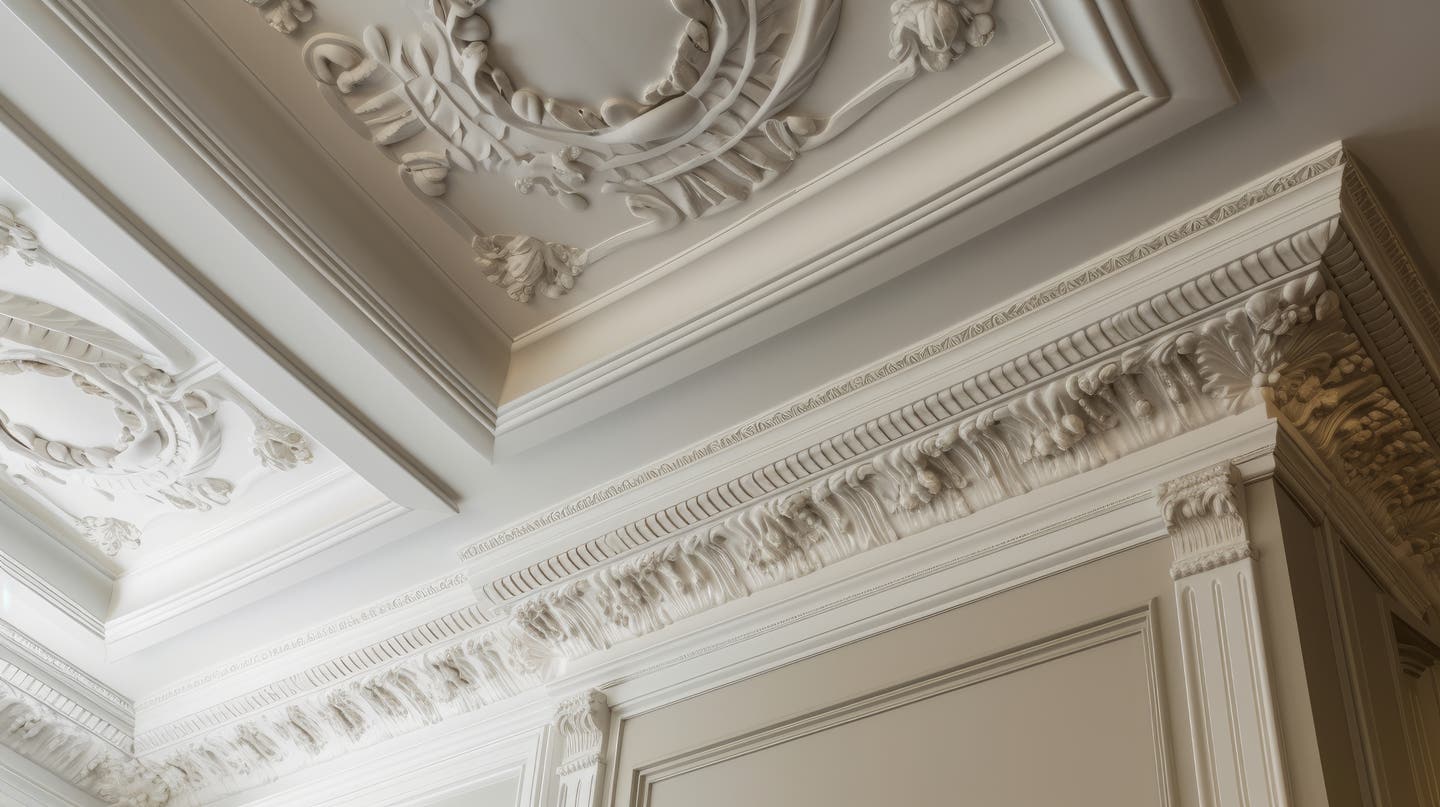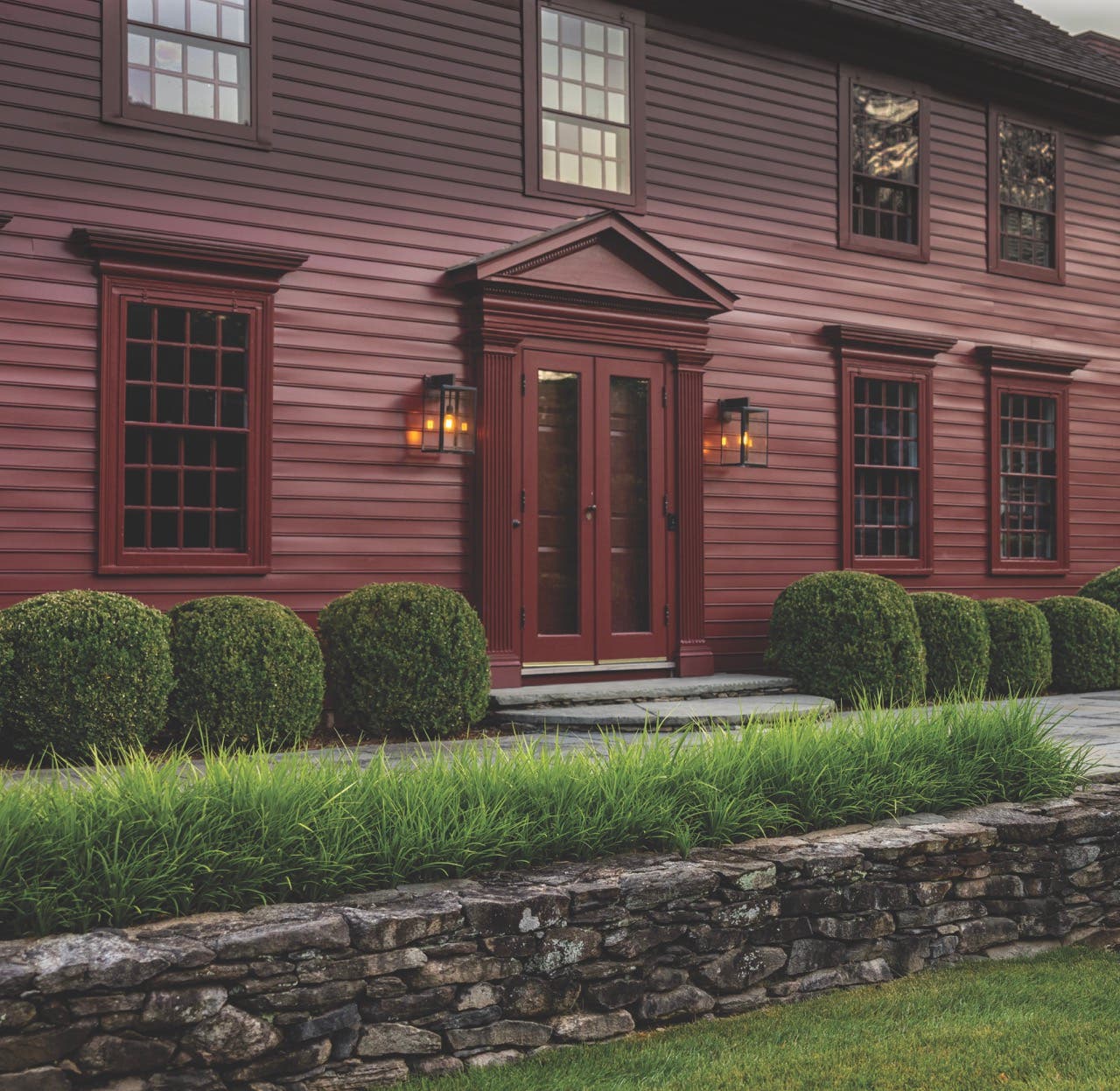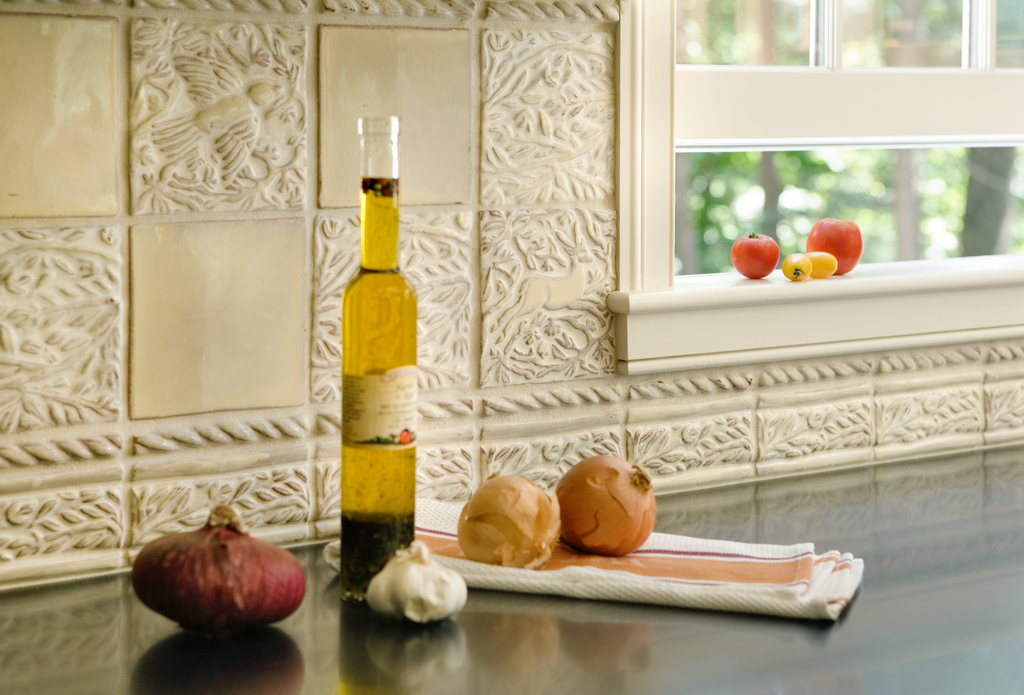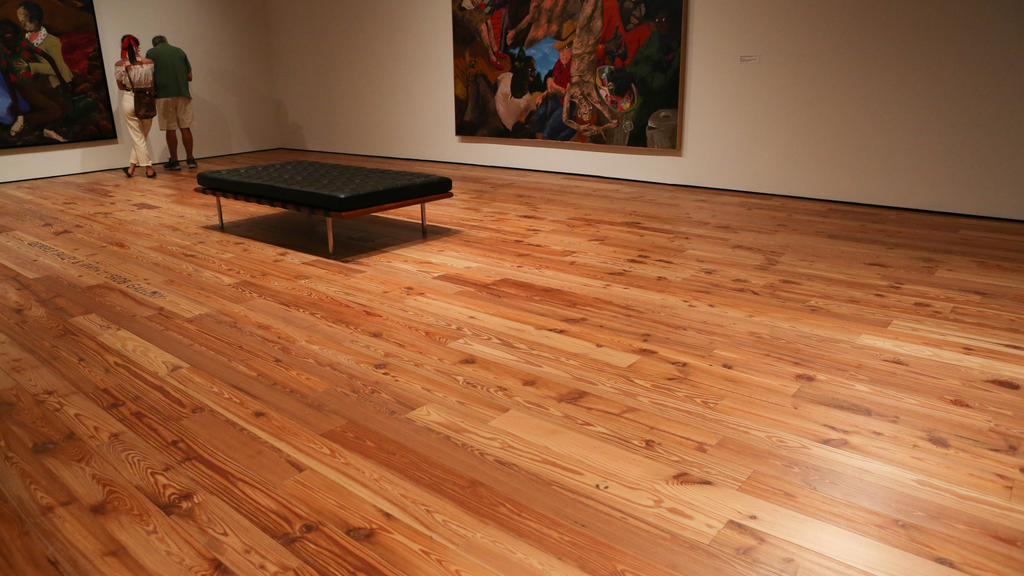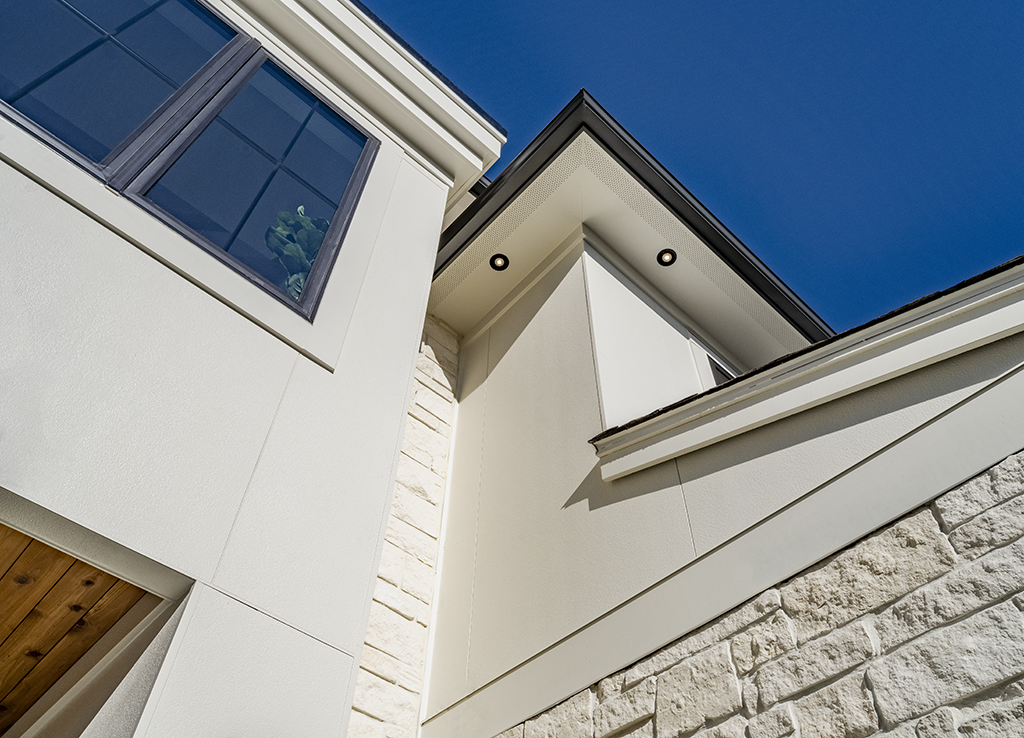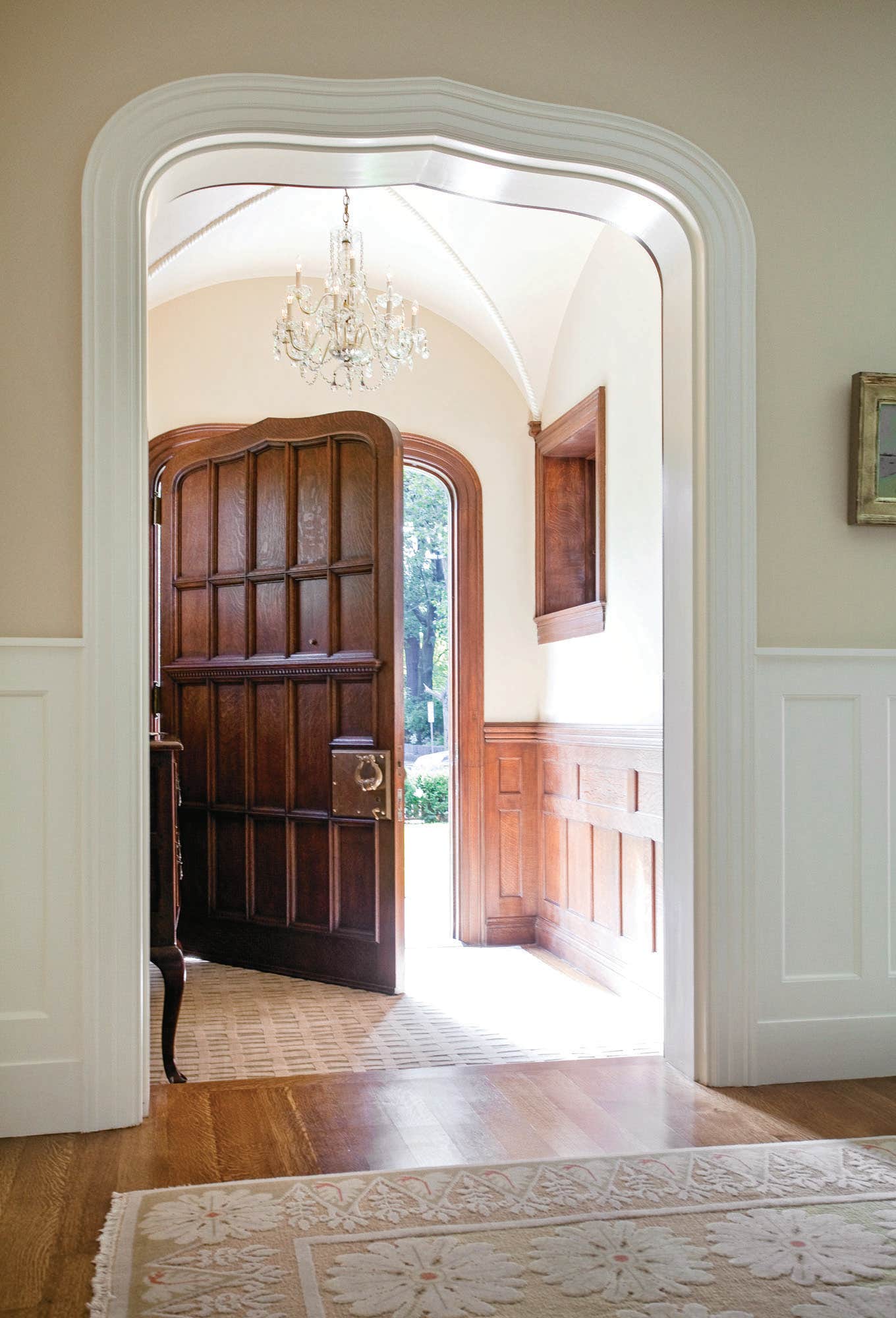
Windows & Doors
Creating a Period Entryway
It is the first element that engages guests before they step inside, it sets the tone for the style of the rest of the period-style house and adds welcoming age-old character and charm.
With the addition of classical millwork and glass side panels and transoms, the front door becomes a signifier of timeless design.
In all styles of traditional architecture, there are a variety of ways to make the entry stand out, whether the door is a plain and simple Shaker or a fancy Victorian Painted Lady.
“It’s important to get it right, because where you enter can enhance the entire building,” says Wendy Wyncoll, special projects administrator for Historic Doors in Kempton, Pennsylvania, which designs and makes period-style custom doors. “It’s a great way to make a first impression.”
Shelby Vanderwilt, entry door product specialist for Pella, agrees, adding that “the entry door should have curb appeal. It’s a statement piece. More attention is being paid to front doors, and traditional homes can distinguish themselves with bold entry doors.”
The choice, Wyncoll adds, is becoming even more crucial because front entries are getting wider, taller and more sophisticated in style.
Vanderwilt notes that “we’re seeing 8-foot- and 9-foot-tall entry doors. Even side doors are now that tall. And we’re seeing bigger hardware to match the new heights and widths.”
Materials
Although period-style doors are available in various materials, including aluminum cladding and steel, wood generally is the preferred choice for full-scale historic restorations and for homes where authenticity is desired.
“Mahogany is the most popular because of its durability,” says Ron Safford, president of Parrett Windows & Doors in Dorchester, Wisconsin, which manufactures custom-crafted doors, grills and accessories. “It has a lot of character and is pleasing to the eye.”
White oak, Douglas fir and pine also are top choices, according to Safford.
Wyncoll says customers choose wood because “it’s natural, authentic, and a great insulator.”
Pella’s Architecture Series offers wood entry doors as well as high-end Fiberglas-skin doors.
“Our wood doors have custom capability, but the Fiberglas models are easier to maintain and are a little bit less expensive than wood so they are slightly more popular,” Vanderwilt says. “Real wood is used to make the grain pattern on the Fiberglas doors so the graining appears natural. They are paintable and stainable just like wood or can come painted or stained straight from our factory.”
Colors and Stains
The choice of paint or stain depends on the architectural style of the house and, to a lesser degree, the preference of the owner.
“With my customers, a natural finish is most popular,” Safford says. “A clear coat allows you to see the beauty and warmth of the wood. When people ask for colors, the palette is all over the place, but pure black and pure white are popular.”
Pella, which offers 27 paint colors, is expanding its seven-option factory-stain choices.
“We are adding wheat and charcoal,” says C.J. Osborn, entry door product manager. “Wheat, when paired with a medium-tone stain on the siding of a Craftsman house, creates a natural yet noticeable contrast with the front door. And charcoal is versatile in a way that makes it an excellent choice for front doors on all home styles.”
Even if the door is stained, contrasting paint colors allow the trim to become a defining feature.
“The trim should complement, not overwhelm,” Safford says. “Some people choose contrasting trim or a keystone or plinth block on the top of the radius as an accent.”
Hardware
While traditional polished brass hardware is still a top choice, homeowners are starting to request different finishes.
“Recently, we are seeing a bigger request for muted or brushed,” Vanderwilt says.
At Parrett, the most popular orders are brass, bronze, oil-rubbed bronze and nickel finish (bronze finished in a silver color).
Sidelights and Transoms
The new bigger doors are ideal bases for surrounding sidelights and transoms as well as columns and capitals and pilasters and porticos.
“We’re seeing a lot of sidelights and transoms because it’s a specialty for us,” Wyncoll says, adding that Historic Doors creates architectural doors and millwork for site-specific needs.
In most cases, Safford says, the panels have insulated glass.
Decorative glass dominates, he adds, because not only is it attractive but it also provides privacy.
“People want the glass options to be a statement piece,” Vanderwilt says, adding that this can be something as simple as a wrought-iron panel. “Frosted glass is being used as a bridge between contemporary and traditional styles for a more transitional look.”
Patterned glass, Wyncoll adds, is a subtle way to add texture.
Safford says divided light, where a grill pattern is created with separate panes of glass, is an attractive option.
“There’s an equal demand for simulated divided light, where the grill bars are sandwiched between two full panes because it’s less costly,” he says, adding that Parrett is one of the few manufacturers that still offers authentic divided light. “With complicated patterns, there can be a significant cost difference.”
Screen Doors
Screen doors are a simple way to add style or dress up an ordinary entrance at a fraction of the cost of a period-style wooden front door.
They are available not only in standard rectangular shapes but also in arch-top and round-top styles and can be painted or stained to blend in or stand out.
“The simplest screen door doesn’t take away from the entry door when it’s made of the same wood and the same finish,” says Ciro Coppa, founder of Coppa Woodworking in San Pedro, California, which sells 350 custom-built, hand-crafted styles. “They give ventilation and a view.”
Coppa’s doors are fitted with Phifer Ultravue, a screening material that’s virtually invisible so as not to obscure the architecture of the front door.
“People who buy plain-Jane entry doors will buy a fancier screen door to balance and get a traditional-style look,” he says. “We make custom doors with all kinds of designs — dolphins, palm trees, dogs. One customer was a retired Texas Ranger. He had us replicate his badge for the center of the door.”
When Historic Doors customers request a screen door, the company creates designs that are compatible with the custom front door.
“We only do wood frames and bronze screening,” Wyncoll says




